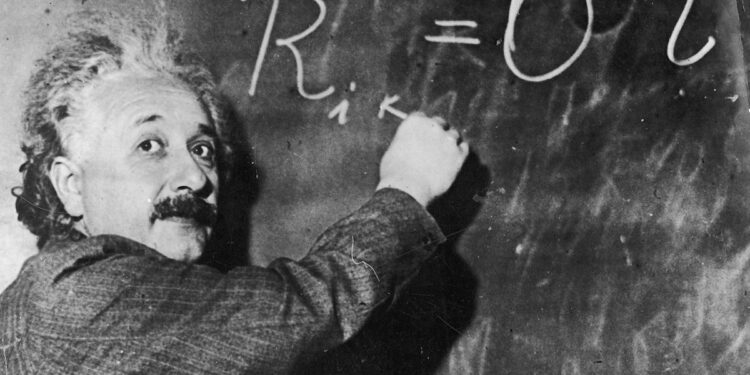Young patent clerk revolutionises physics with a groundbreaking paper
On 30th June 1905, a 26-year-old patent clerk named Albert Einstein submitted what would become one of the most influential scientific papers in history to the German physics journal Annalen der Physik. The paper, titled “Zur Elektrodynamik bewegter Körper” (On the Electrodynamics of Moving Bodies), introduced the world to the special theory of relativity, fundamentally changing our understanding of space, time, and the universe itself.
Einstein’s revolutionary work emerged from his contemplation of seemingly simple questions about light and motion. Working in relative obscurity at the Swiss Patent Office in Bern, Einstein had been pondering the peculiar behaviour of light for years. Unlike other forms of energy, light appeared to travel at a constant speed regardless of the motion of its source or observer—a phenomenon that defied conventional wisdom about physics.
The special theory of relativity rested on two fundamental postulates that would reshape scientific thinking. The first stated that the laws of physics are identical in all uniformly moving reference frames. The second, more radical proposition declared that the speed of light in a vacuum remains constant for all observers, regardless of their motion or the motion of the light source.
These seemingly abstract principles led to extraordinary conclusions that challenged everyday experience. Einstein demonstrated that time and space are not absolute but relative, depending on the observer’s motion. As objects approach the speed of light, time dilates—literally slowing down—whilst space contracts. Mass and energy became interchangeable, captured in what would become the world’s most famous equation: E=mc².
The implications were staggering. Einstein’s work suggested that simultaneous events might occur at different times for different observers, that rulers would shrink and clocks would slow down at high speeds, and that mass could be converted into tremendous amounts of energy. These concepts seemed to violate common sense, yet they would prove remarkably accurate when tested experimentally.
The scientific community initially received Einstein’s paper with a mixture of fascination and scepticism. Many physicists struggled to accept ideas that contradicted Newton’s centuries-old laws of motion and the concept of absolute time and space. However, as experimental evidence accumulated over the following decades, special relativity became one of the cornerstones of modern physics.
Einstein’s 1905 paper was part of his “annus mirabilis” (miracle year), during which he published four groundbreaking papers that revolutionised physics. Beyond special relativity, he explained the photoelectric effect (later earning him the Nobel Prize), described Brownian motion, and established the equivalence of mass and energy.
The theory’s practical applications would eventually transform technology and our understanding of the cosmos. From GPS satellites that must account for relativistic time dilation to nuclear energy that harnesses mass-energy equivalence, Einstein’s insights continue to shape our modern world. The paper also laid the groundwork for his later general theory of relativity, published in 1915, which would further revolutionise our understanding of gravity and spacetime.
Today, nearly 120 years after its publication, Einstein’s special theory of relativity remains a testament to the power of human curiosity and intellectual courage to challenge established thinking and reveal the hidden workings of the universe.
REFH – newshub finance



Recent Comments